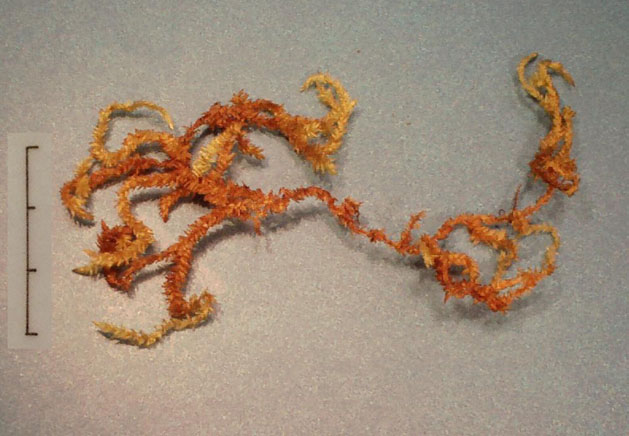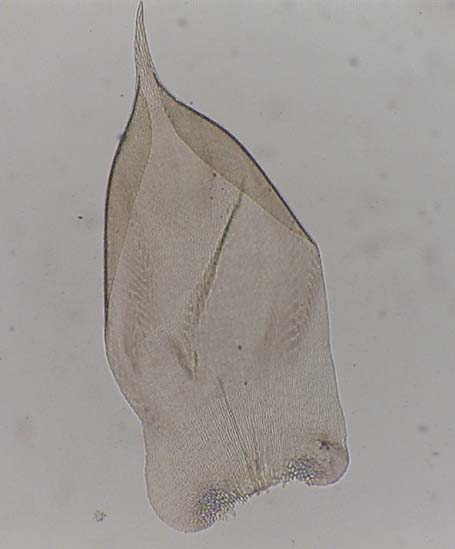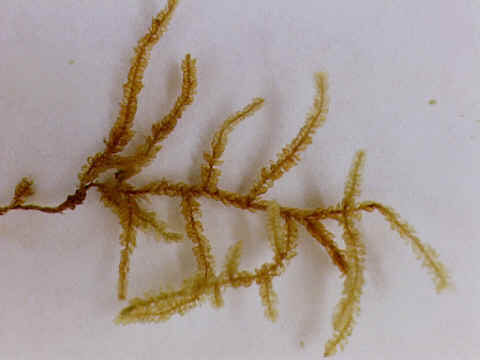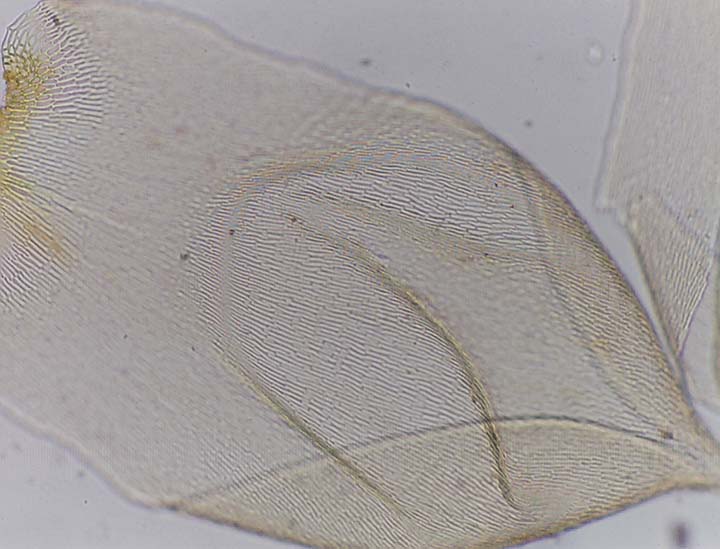![]()
|
|
|
|
|
NSF-PEET project in Systematic
Bryology
Missouri Botanical Garden
![]()
|
Introduction to project |
Phylogenetic studies |
||
|
Staff and students |
|
Distribution |
|
|
Pilotrichella names list |
|
Illustrations |
|
|
Pilotrichella monograph |
|
Literature |
|
|
Student projects and training |
Database (W3 MOST) |
![]()
ABSTRACTS OF
NSF-PEET PRODUCTS
![]()
A Monograph of Pilotrichella in the Subfamily Pilotrichelloideae (Meteoriaceae:
Musci)
![]()
|
This project, to study Pilotrichella in the subfamily Pilotrichelloideae, will have three components: 1. a traditional monograph to assess relative character conservatism, identify characters of phylogenetic importance, evaluate and analyze generic relationships, circumscribe the subfamily into a clearly monophyletic unit, and evaluate the relationship of the Pilotrichelloideae to the Meteorioideae; 2. a program to train graduate and post-graduate students in both modern and traditional techniques and methodology of bryological systematics; and 3. the utilization of existing and developing computer facilities to build and manipulate data bases, train project personnel on all aspects computer use for scientific research, and disseminate the accumulated data and results of the monographic study through a variety of media. Back to TOP |
|
The Meteoriaceae (22 genera, 300 species) are a tropical, Leucodontalian family concentrated in the Southern hemisphere. It was last treated as whole by Brotherus (1925),who divided it into two subfamilies: Meteorioideae and Pilotrichelloideae. The subfamily Pilotrichelloideae contains 111 species in eight genera and is the monographic component of this project. Six of these genera have recently been revised, only Pilotrichella and Barbella are unrevised. This monograph will have three aspects. First Pilotrichella (58 species) and Barbella (36 species) will be critically revise using a traditional, morphological methodology. Second, the eight fully revised genera in the subfamily will be subjected to a through and rigorous cladistic analysis. Characters will be polarized using Meteorioideae and Trachypodiaceae as outgroups. Non-discrete character variation will be analyzed using Principal Component Analysis in an attempt to render it into discrete units. This discrete variation will be analyze by similarity matrix analysis which generates cluster phenograms. The third aspect of this study will entail DNA-sequencing of the genera. Finally, based upon the cladistic analysis as compared and tested against the DNA-sequencing results the subfamily Pilotrichelloideae will be newly circumscribed. Back to TOP |
|
The Missouri Botanical Garden maintains a large, modern, and well documented herbarium of over 4.5 million plant specimen - over 300,000 bryophytes, an important, historical library containing over 118,000 volumes, and through it close ties with the three local universities an outstanding record of training and education in botanical systematics. The bryological staff that will be supervising the monographic research and training program have published 17 monographs or revisions and over 280 other papers dealing with the taxonomy, nomenclature, literature, and systematics of bryophytes. |
|
The project will depend heavily on TROPICOS, the botanical database maintained by the Garden. It provides for all aspects of data management and manipulation used in monographic research. This system already includes all moss names, both accepted and synonyms, needed for this research project and associated literature citations and bibliographic references. The system provides access to the Internet and has been successfully used to produce Gopher and WAIS files, properly formatted tables for DELTA and ARCH/INFO. The HTML name and specimen documents presented here were produced directly from TROPICOS without intermediate editing. The computer system at the Garden will employed throughout this project to demonstrate the benefits of computers in gathering, manipulating, synthesizing, and disseminating as widely as possible, the information gathered during this research project. Back to TOP |
|
Literature Cited Brotherus, V.F., 1925. Musci (Laubmoose). in A. Engler & K. Prantl (eds), Die Natürlichen Pflanzenfamilien, zweite Auflage, Vol. 11, Berlin. |
Contact: Robert
E. Magill/ Bruce Allen. Webpages: Michelle Price
![]()
Staff and Students on the NSF-PEET Project in
Systematic Bryology
|
Robert
Magill and Bruce Allen developed the Pilotrichelloideae NSF-PEET project. Dr.
Magill oversees the progress of the grant research and plays a major role in
the training of students in computer techniques and database management. |
|
Dr.
S. P. Churchill Steve
Churchill is principle investigator on the PEET project. His roles include
the training and guidance of the three graduate students during the project
and the development of taxonomic component of the project |
|
Dr.
B. H. Allen Bruce Allen
works alongside Dr. Churchill on the taxonomic component of the grant. |
|
Graduate Students
|
|
The graduate
students have been responsible for the processing of specimens from Missouri
and loaned specimens, in data entry and management, and the collation of the
specimens for the molecular sequencing work carried out in collaboration with
the Shaw lab at Duke University, North Carolina. They will work collectively
on the morphological cladistic analysis of genera in the Pilotrichelloideae
and Meteoriaceae and in the monographic work. All the students were
responsible for entering the specimen data from the loans that were received
from herbaria worldwide. |
|
Christina M. Casado |
|
Zacharia L. Magombo Zacharia assisted in obtaining and photocopying the original descriptions of Pilotrichella and other relevant taxa from the literature. |
|
Michelle J. Price
Michelle assisted in obtaining and photocopying
the original descriptions of Pilotrichella and other relevant taxa
from the literature. She has developed the
webpages for the PEET project in collaboration with Dr. R.E. Magill. She also
photographed all the images for the speciemens of Pilotrichella for
presentation on the website using a PIXERA digital camera system. In addition
to that she has scanned all the protologues for the taxa of Pilotrichella
from the original literature. These protologues are available through the
webpages. Michelle managed the specials 'PEET' database for the names in Pilotrichella
that was used in the production of the names list for the website, for the
presentation of the images/protologues and for use during the monographic
process to update the status of species and nomenclature in Pilotrichella.
Michelle has illustrated taxa for the webpages. Michelle has also assisted
with the ongoing management of the database for the taxa used for molecular
sequencing and in the preparation of these specimens for the sequencing. |
Back to top
![]()
|
Missouri
Botanical Garden Moss Database - W3MOST |
|
The moss database, MOSs TROPICOS, at Missouri Botanical Garden is available through WWW access from the Bryology Website. The database is a centralized repository for the information associated with each bryophyte specimen that has been entered into the database, for recent bryological literature and for information pertaining to bryophyte nomenclature. |
|
The W3MOST database was developed by Dr. R.E. Magill in collaboration with Dr. M. R. Crosby at Missouri Botanical Garden and currently contains over 80,000 entries from the Marshall R. Crosby Bryophyte Herbarium and Bryophyte Herbaria all over the world. These specimens are either entered by staff in the bryology department from loaned specimens or from organizations collaborating with the Bryology Department at Missouri Botanical Garden. The database contains current information on the status of bryophyte names, places of publication, type information that is accessible from the webpages. The database facilitates the extraction of distribution data and mapping facilities are available through the internet access. Specimen data can also be obtained showing collector and number, collection locality and the location of the specimens in Herbaria. Specimen images are being added to the database at present along with images of old literature and it is linked to a glossary of bryological terms. |
|
Within the Bryology
department at Missouri Botanical Garden the W3MOST database is
used for data entry, label production, the recording of field book localities
and for large-scale data management. It allows data to be extracted from the
database for use in specialized projects such as the NSF-PEET project on Pilotrichella
and the NSF-PEET funded graduate student projects. Bob Magill - magill@mobot.org Back to top |
![]()
Webpages prepared by Michelle Price, 1999. Updated April 2000. mailto:mprice@lehmann.mobot.org
Back to top
![]()
Pilotrichella name list | Pilotrichella revision | Morphology and Molecules | MBG PEET page | Bryology home page



